

If you choose not to rely on electronic communication, thats great. But for those of us who do, isn't it time we set up community run alternatives?
Gradually, the internet, which once seemed like a relatively free and user-controlled system – at least compared with totally centralised TV/radio broadcasting, is becoming a controlled commercial space where people don't trust each other and we are constantly under the eyes of authorities and businesses - much like our city centres.
Two examples: In February 2012 the non-profit website 'scroogle' which offered an alternative version of google (where searches were not recorded) was taken down after action against it taken by google. Then in march 2012 google put into practice their new privacy policy, making users search history available to other google owned sites. Of course other sites exist which provide secure web searches.
During the uprising in Egypt 2011 there was an internet blackout, making it clear that such a communication network is valuable for organising social change but sadly rests in the hands of companies willing to cooperate with the authorities. Since then the US has began to develop an 'internet kill switch'. See the US Open congress bill 'Protecting Cyberspace as a National Asset' and indymedia article Internet Freedom Fighters Build a Shadow Web



In order for a community run network to become popular, it might be useful to have some universal standards, and a way for different networks to link together. A small group might use high frequencies to get high bandwidth communication locally, but how can we connect that communication with lower frequency, longer range links to other communities? If we are going to set up some sort of repeaters or base stations to link groups, they need to be useful to everyone, and not dependent on other parts of the network. Some repeaters might be installed in vehicles or boats that move around. Or they might be dependent or wind or sun for power – so they cannot be always relied upon.
It is relevant here to question what is important to us in a communication network. Simply spending time with and talking to people around you is a very useful way to communicate. Any kind of centralisation or broadcasting of information could be argued to be detrimental to the autonomy of individuals and communities. when we look at examples in 'nature' we can see that beautiful organised structures come about as the result of a large number of low level interactions.
make food and fire, people come together and communicate. actually it seems that the more communications technology we have, the less we do this. a lot of people feel really isolated, even though they have worldwide communication devices.
Language is an important communication tool. Like other aspects of our culture, it is becoming more homogenised and less diverse. There are many examples of when a common language has been used as a way for a minority to have power over many, and of when speakers of other languages or dialects are oppressed. Language homogeny is a structure used to create a national identity and recognition of and obedience to a national state. Many revolts and uprisings have been possible because of a refusal to use the majority language. In recent times, the globalisation of the market and of communications infrastructure (for example the internet) mean even more homogeny of language, allowing even more centralisation of control by a minorty. Of course, using a common language improves relations between communities, but when this is forced or imposed my a minority there will always be some kind of communication breakdown, a loss of some culture, ideas or knowledge, and somebody will be more isolated. Thats not to say we should not learn popular languages and use them to network with far away friends, but that we must recognise that divirsity of language is important in maintaining decentralised social control.
Stories, tales and songs are a way to memorise ideas so they can be passed between groups and between generations.
Write a letter, and give it to someone who is travelling the direction you want it to go. Like all communication systems, the provision of a postal service has often been a way to exert control.
A simple way to communicate in a group is to leave a written or pictorial message for others to see. A way of making it weatherproof is usually needed.
Some would argue that the invention of the printing press, meaning that information could be mass produced, was a hindrence to our diversity of ideas. There are no doubt problems brought about by any kind of mechanism which allows a minority to speak to the masses. But of course they can also be very important and empowering community tools.
The radio spectrum, like other kinds of space, has been divided into discrete parts of which the majority is resverved for authorities, military, or companies who will sell it back to us to use. To use it in a genuinely decentralised way we might need to disrespect the idea of bandwidth ownership.
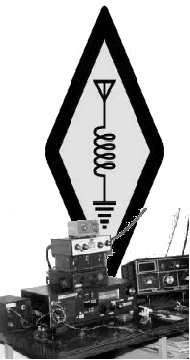 'amateur' radio communication has
existed for over a hundred years. It is both a local and an
international network and has often been relied upon when other
communications have broken down because of disasters such as floods.
Data modulation systems such as
PSK31 can allow text services
similar to email or sms, which can operate over thousands of miles on
HF. Using the amateur bands requires a lisence and an official
'callsign', which are relatively cheap and easy to get, but there are
some undesirable restrictions. For example, sending encrypted messages
is forbidden, and the lisencing association stores personal details of
its users and will cooperate with governments. Of course we could use
similar systems illegally, but as an existing nework it has the
advantage of having estabilished and well documented international
standards, as well as infrastructure such as repeater stations. The
amateur community emphasises learning and experimentation rather than a
practical everyday communication tool.
'amateur' radio communication has
existed for over a hundred years. It is both a local and an
international network and has often been relied upon when other
communications have broken down because of disasters such as floods.
Data modulation systems such as
PSK31 can allow text services
similar to email or sms, which can operate over thousands of miles on
HF. Using the amateur bands requires a lisence and an official
'callsign', which are relatively cheap and easy to get, but there are
some undesirable restrictions. For example, sending encrypted messages
is forbidden, and the lisencing association stores personal details of
its users and will cooperate with governments. Of course we could use
similar systems illegally, but as an existing nework it has the
advantage of having estabilished and well documented international
standards, as well as infrastructure such as repeater stations. The
amateur community emphasises learning and experimentation rather than a
practical everyday communication tool.
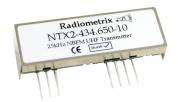 A simple solution can
be to use low cost UHF transmitters/recievers with RTTY. There are some
very cheap transmitters sold on ebay, some sold for use with arduino or
raspberry pi (see issue 8 of magpi magazine). The problem is that the cheaper
ones do not support channel selection, so would interfere with each
other.
A simple solution can
be to use low cost UHF transmitters/recievers with RTTY. There are some
very cheap transmitters sold on ebay, some sold for use with arduino or
raspberry pi (see issue 8 of magpi magazine). The problem is that the cheaper
ones do not support channel selection, so would interfere with each
other.
Pirate radio can be empowering for a community and is a useful tool for combining art and information. The advantage is that the recievers are cheap and can be found everywhere. Compared to wifi networks it is much more practical for recieving in more wild places, fields, gardens, workshops, meaning we can be doing practical things and not stuck indoors, while recieving information. Of course there are legal problems with broadcasting without a lisence, especially if it is done in the city. But using it in isolated rural areas is something that can definately be experimented with. As anyone with an FM radio can listen, it can be a good way to make links with other people who live nearby.
However, we must not forget that the nature of broadcast is that it remains a one-to-many 'shut up and listen' monologue, traditionally used as an oppressive political tood, and care must be taken that it remains a project that everyone can participate in.
FM systems will usually use a 1 or 2w 'exciter' to produce the modulated signal and then an RF amplifier. Many modern systems, especially the cheaper/lower power ones have the exciter and amplifier all in one box or even all on one board. 'HLLY' and similar Chinese brands are like this and are very cheap and simple to use. However they are not very high quality and not suitable for high power transmissions (more than say 60w). Also the more power you are using, the better antenna you need to not damage the transmitter. Most transmitters have a built in SWR (standing wave ratio) meter to give an indication of how well the antenna is functioning and will normally switch off automatically if a dangerously high amount of power is coming back from the antenna. Some transmitters will need an external SWR meter.
Most low power FM transmitters run on 12v DC so are perfect for running from batteries. If you want to run from the mains electricity and dont have a transformer, computer power supplies work quite well. If they are modern ATX ones, you will need to connect the green wire on the motherboard connector to a black wire to switch it on. Then on each block of 4 wires you have yellow and black wires to give 12vDC and red and black to give 5vDC.
Many pirate radio stations use a 'bridge' to link the studio to a remote transmitter. This is done either for security reasons (not wanting to get caught at the site of the transmitter) or simply to keep the transmitter close to the antenna when the antenna is in a difficult to reach spot (remember, the hieght of the antenna greatly effects the range). A bridge which gives a lot of range allows you to be very creative with antenna locations, as the transmitter could be powered by a small solar panel and battery and put in a very difficult to reach place. This 'bridge' can be made in various different ways:
FMA200 tunable 5/8 wavelength antenna. Is quite a good commercially available antenna for FM.
freie-radios.net - audio portal of community radios. Over 25,000 recordings
For making antennas its important to know the wavelength.
wavelength(lamda) = c / frequency
c = speed of light = 299,792,458 m/s or just use c = 3 * 10 ^ 8
so if we use working with frequency in MHz we can use c = 300m/s
so wavelength = 300 / frequency in MHz
so 100mhz = 3m wavelength
Many pirate radio stations operate on FM. But there are also AM stations covering larger areas, and there is an international shortwave pirate radio scene.
The projects in this section generally require already having some internet connectivity rather than building from scratch. But they aim to be more distributed and many work well together with community wireless networks described below.

magnetico - labs.boramalper.org github repo describes itself as an 'autonomous (self-hosted) BitTorrent DHT search engine suite'.
The Bittorrent mainline DHT, is, a least according to this paper published in 2013, by far the biggest p2p network in the world both in terms of users and volume of traffic.
But the methods of finding torrents have traditionally involved using centralised torrent hosting sites and trackers. This has changed somewhat since the distributed hash table was introduces with BEP 5, meaning only a magnet link containing a hash of the torrents content was needed, and peers could be found without the need for a centralised tracker. But the magnet links themselves still needed to be hosted somewhere.
A project called tribler solved this problem to some extent, providing a peer-to-peer search mechanism, but it only works between tribler's user community, which is tiny in comparison to all users on the bittorrent network.
Magnetico is a program which scrapes torrent data off the DHT to build your own torrent database and could just be the final piece in the puzzle.
See also the filesharing section
Dat is a decentralised storage tool inspired by bittorrent, but with built in version control. Dat has similarities with IPFS, however Dat archives are addressed by public key and can be updated whereas IPFS (at least in early implementations) addresses static content.
The 'inter-planetary filesystem'. A decentralised, peer-to-peer protocol, designed to be an alternative to HTTP (and potentially many other internet protocols). It is a content addressable filesystem, meaning files are referred to by their content (using a hash) rather than their location. The nearest available copy of the file is retrieved, increasing speed and efficiency and removing the power dynamic of a centralised server-client relationship. IPFS seeks to be a more permanent data store than the web where old sites can get lost forever.
 Secure Scuttlebutt (SSB) is a peer to peer platform designed for social networks.
Secure Scuttlebutt (SSB) is a peer to peer platform designed for social networks.
Noteworthy applications on SSB include: (Complete list)
SSB references and media articles: - The Scuttlebutt Protocol guide a detailed description of the protocol - Scalable Secure Scuttlebutt draft article on scaling SSB - Andre Staltz's classic article 'An Off-grid Social Network' - 'The Atlantic' article 'Meet the nomad who's been exploding the internet into pieces'
Some work-in-progress implementations of SSB in other languages:
SSB's 'feeds' can be thought of as a diary for each peer. The diary is an append-only log of hash-linked signed messages consisting of javascript objects. Each peer stores and regularly synchronizes the diaries of other peers with which they have relationships, as well as of peers on the periphery of their social network, depending on the desired number of 'hops'. Depending on the application, messages of particular types or with particular properties are aggregated in different ways, typically using a custom-built database and query system, flume.
Due to the need to continually process multiple feeds, SSB applications tend to make heavy use of streams. A custom system of pipeable streams has been developed which is particularly suited to processing SSB feeds.
Contrary to content-addressed systems like Bittorrent, IPFS or DAT, SSB is structured around propagating 'feeds', collections of messages from particular peers, based on the relationships between peers. As such, a particular piece of data is not either 'on SSB' or 'not on SSB', rather the data held by each peer depends on their relationships with other peers. The network topology is determined by social topology.
Many other peer to peer systems use a distributed hash table (DHT) to index and propagate data whereas SSB uses a gossip protocol. With a DHT, all users have, in principle, access to a ubiquitous data-set, and their connectivity with particular peers effects only how long it might take to find a particular piece of information (of course in practice some data often cannot be retrieved). In that sense they essentially emulate the behavior of a centralized system, where all users access the same source of data. By using a gossip protocol, the data-set itself is dependent on the relationships between peers. In the case of SSB, the user explicitly chooses which peers they want to relate to, and by doing so retrieves messages from those users' 'feeds', regardless of their content, and stores them allowing them to propagate to other peers requesting messages from that particular user. It has a relationship-centered topology.
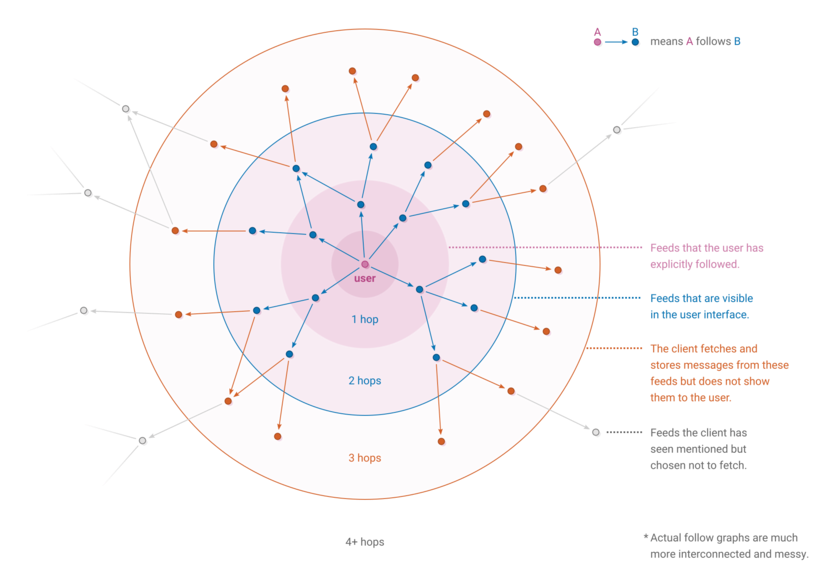
There is much discussion about the optimal parameters for 'gossiping'. Notably, the 'number of hops', the extent to which a user holds data from indirectly related peers ('friends of friends', or 'friends of friends of friends'). This can be individually adjusted using client software and might vary depending on the use-case, the resources available and the attitude of the user.
Of course, SSB is not without its limitations. IP addresses are exposed by default. There are ways around this, but it is important to note that it is not anonymous out of the box. That said, the handshake mechanism used has some promising security properties. It is impossible to connect to a peer without knowing their public key, and peers have control over who they allow connections with. Passive eavesdroppers exposed to the handshake are unable to determine the public key of either peer.
SSB is also not well suited to handling large files and data sets. Messages in SSB feeds are limited to 8kb, and larger amounts of data such as images and other media are handled by a distinct sub-protocol called SSB-blobs. However, SSB-blobs is also not designed for particularly large data sets (by default, 'blobs' are limited to 5MB).
VPNs consist of tunnels which aim to emulate being on a private local area network when in fact the connections span a wider network such as the internet.
Many companies use VPNs to create a secure private network without needing to have their own cable or radio connections between buildings. They are also commonly used to give privacy and anonymity online, and there are many providers offering internet access over VPN for this purpose. VPN tunnels can also be used to create alternative networks or used together with some of the other platforms listed here.
Tinc is a protocol for virtual private networks without a server-client architecture, and some routing features that make it suitable for creating peer-to-peer networks.
Using wifi for outdoor links is gaining more and more popularity. As the 2.4ghz band becomes crowded in densly populated area, more projects are begining to use the 5Ghz and 10Ghz bands as well.
althea mesh project where you pay peers to share connection
FON - commercially provided cooperative wifi sharing (but you need an internet connection to join)
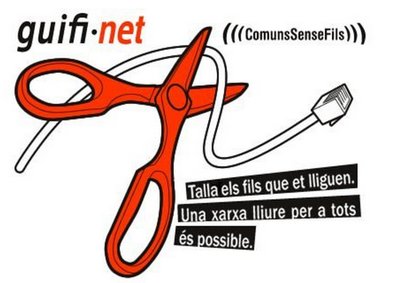 guifi.net is
based mainly around catalunya/valencia, and with over 20,000 operational
nodes, it claims to be the biggest wireless network community in the
world.
guifi.net is
based mainly around catalunya/valencia, and with over 20,000 operational
nodes, it claims to be the biggest wireless network community in the
world.
Each local guifi.net group organises between themselves financially - antennas can be bought be individual users, but often it is useful to put together some money for more expensive longer distance 'supernodes' and for times when nodes would need to be replaced, for example after being struck by lightening.
Many local guifi.net groups have successfully persuaded local government to share their internet connections, for example from libraries or offices, by allowing the group to install an antenna at the site linking it to the guifi network.
Guifi.net is backed by a 'foundation' officially registered as an operator with the Spanish Telecommunications Market Commision. Anyone (as long as they abide by guifi.net's code of practice) can use the name, and take advantage of being recogised as a foundation. For example, the inhabitants of two towns might organise together to lay fibre between the towns, and use guifi.net's foundation status to get permission from local governement.
They also have a good advocat and rely on european law to settle disputes about the legality of the project.
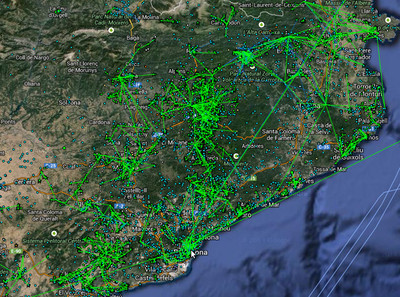 They use a private address space 10.xxx, ips are allocated by their
website. and there are dns servers to resolve these local ips. The
network is primarily used for providing interenet access, but
off-internet services (ftp, etc) also exist and are quite popular.
They use a private address space 10.xxx, ips are allocated by their
website. and there are dns servers to resolve these local ips. The
network is primarily used for providing interenet access, but
off-internet services (ftp, etc) also exist and are quite popular.
Many guifi.net groups use mikrotik routers, and some use ubiquity.
 Freifunk is an international
Project for free wireless networks and frequencies (Open Spectrum).
Originating in germany, there are many community wireless mesh networks
operating under the name 'freifunk'. The freifunk firmware is a modified
version of OpenWRT designed for mesh networks. In Germany, there are
legal problems with offering unlocked wifi internet access because of
the oppressive regulations about filesharing and their implications for
the interenet account holder
(Störerhaftung). Many
freifunk projects now use Virtual Private Networks to re-route network
traffic to get are this problem. This highlights a problems with the
regulation of the internet by governments, and another way to get around
it could be to begin to use off-intenet projects and services.
Freifunk is an international
Project for free wireless networks and frequencies (Open Spectrum).
Originating in germany, there are many community wireless mesh networks
operating under the name 'freifunk'. The freifunk firmware is a modified
version of OpenWRT designed for mesh networks. In Germany, there are
legal problems with offering unlocked wifi internet access because of
the oppressive regulations about filesharing and their implications for
the interenet account holder
(Störerhaftung). Many
freifunk projects now use Virtual Private Networks to re-route network
traffic to get are this problem. This highlights a problems with the
regulation of the internet by governments, and another way to get around
it could be to begin to use off-intenet projects and services.
funkfeuer.at is a free mesh network project based in austria, using OLSR routing protocol. It is a radio network, also using internet VPN tunnels to link 'radio islands' (nodes not accessible by radio).
Some commercial manufacturers of wifi equipment are
Many wifi projects use cheaper brands of routers, designed for use in the home, such as Linksys, TP-Link and Buffalo.
Optical links can give very high bandwidth but must be exactly pointed at each other.
A standard for WRAN (wireless regional area networks), IEEE 802.22 has recently been developed, which will use 'white spaces' in the VHF and UHF bands, previously used by analogue TV broadcasting. The standard is likely to be used by commercial internet service providers to cover rural areas - internet base stations could operate over a 60km radius, like TV transmitters. It is the first international standard to use 'cognitive radio' to eliminate interference with existing TV signals. This makes it possible that transmission equipment will be software defined, making it more adaptable for eventually being re-used by us.
Software Defined Radio devices could be very useful in establishing a community run network. They are computer controlled radios, where various aspects of the radio's operation which traditionally were done by analogue hardware devices, in paticular the modulation and demodulation of the RF signal, are done digitally by software. This has only recently become posibile because with radio frequency high sampling rates are required and computers need to run fast enough to demodulate them in real time. The advantage is that software defined radio devices are flexible, adaptable and easy to modify. By changing the software, a single device could act as an FM transmitter, GPS reciever, digital TV decoder, VHF tranciever, whatever... Of course some hardware changes (such as amplifiers or antennas) are required, but essentially it is software which defines the behaviour as a radio device.
This means that new radio protocols could be established without the need for new hardware. But that is only the beginning. It allows more dynamic, more flexible use of the radio spectrum. When there is little radio traffic (in unpopular places or at unpopular times) we can use more bandwith, reacting dynamically to interference. When connectivity is good we can increase frequency and decrease power consumption. When powered by solar or wind, we can dynamically adjust frequency or RF power depending on the power available.


Making devices more flexible by increasing the extent to which they are controlled by software is good because when the device is no longer needed it can be used for something else instead of being thrown away. Multi-perpose programmable devices, such as the arduino or raspberry pi, are good examples of hardware which will never become redundant. Software defined radio is likely to gain popularity in the coming years, which is interesting for us because it is easy to modify for different perposes. So when this technology becomes widespread and easy to find for free, we could modify commercial devices to work with our own set of standards – and if we change those standards at some point we will not need to get new equipment.
The USRP has been used in projects to decode GSM mobile phone signals. It is also used in a project to create easy to build GSM base stations using OpenBTS. A free mobile network using the USRP running OpenBTS (with some RF amplifiers) and powered by wind has been set up at Burning man festival for several years (But with an official lisence). Of course if an unlisenced GSM network was to get popular, we would be likely to have problems with the authorities very quickly. But the advantage is that individual users need only a mobile phone – and thousands of them are being thrown away.
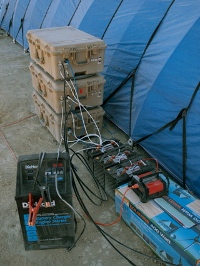

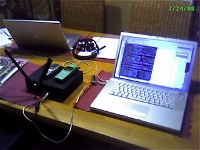
More recently, low cost SDR receivers have become popular, as it was realised that SDR digital TV recievers (such as the NooElec TV28T)can be used in a very flexible way - recieving 25MHz to 1.7GHz, usually with a 1mhz bandwidth, meaning they can be also be used as a spectrum analyser to look at 1mhz at a time. An antenna design known as a discone is good for omnidirectional wideband applications making it good for SDR projects.
There seems to be a number of reasons why Software defined radio could be useful for community run communication systems. It could allow us to create something genuinely independent of existing commerically provided systems, whilst being able to re-use redundant hardware from these systems. Changes can be made to the standards of how the system works without requiring any new hardware – saving resources. Frequencies can be dynamically allocated, allowing different types of hardware to work together and interference with other systems to be avoided automatically. Software projects are also easier to work on collaboratively than hardware, meaning they will be constantly optimised and adapted.
Orthogonal frequency-division multiplexing is the modulation system used by ADSL, Wifi, and DAB digital radio. Multiple carriers are used, and the idea is that sub carrier frequencies are chosen that are 'orthogonal' to each other, which means they do not interfere with each other. Interestingly it is used even on HF (below 30Mhz) as used by the new international broadcast system 'digital radio mondiale'. It allows for a better signal in less bandwith compared to standard AM modulation.
Decentralised community run systems will, by their nature, encourage people locally to interact, as information spreads geographically. If you are searching for something or announcing that you have something to offer, it will be naturally easier to find responses nearby. Compared to the internet, it will be more chaotic, but in a beautiful self-organising way. Text/images/music/whatever will spread geographically and and be able to discover the same stuff as others nearby but it will change all the time as ideas/art spread between groups like a roumour, like fairytails.
But aren't you gonna spend forever setting all this stuff up while your
plants need weeding and watering and you ignore the people around
you..... 
continue to 430mhz data transfer